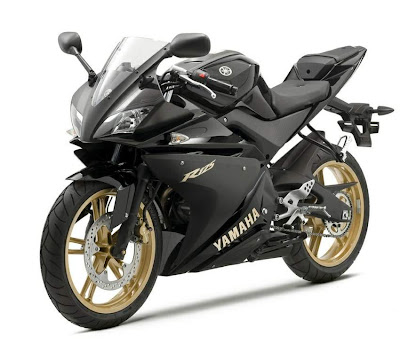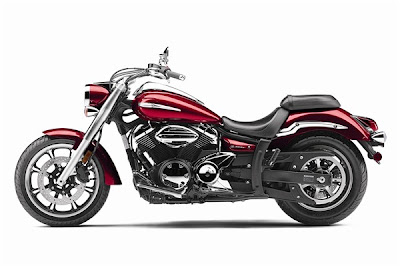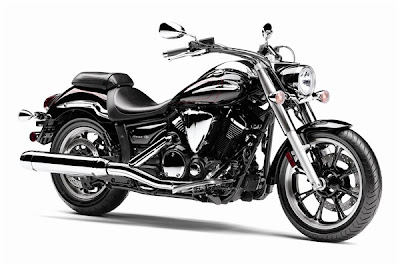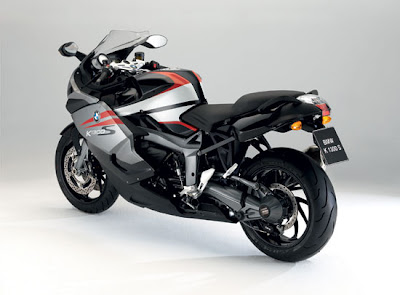I'm sure you have heard them The rumors? From people "in the know" about your bike, theirs, and every motorcycle in between?
Ducatis are temperamental, unreliable, and will take you down like the Edmonton Fitzgerald at the first whiff of foul weather.

BMWs are boring.
You'll spend more time picking up pieces of your Triumph along the roadside than actually riding it on the road.
Americans can't build sportbikes.
A Honda doesn't break. And it never, ever dies. It is the X-Man, Wolverine, of motorcycles. Without the snarl.
Well, I've had two Ducati motorcycles, put 13,800-miles and 7,400-miles on them, respectively, and the only mechanical issue was the need to give the timing belt on the 848Evo a slight adjustment at 6,000-miles. Both were used for multi-day travel. The Monster survived a two-week, cross-country tour that included mountains, rain, and snow. It never so much as hiccuped.
Just spent a day at
Virginia International Raceway on a BMW S1000RR sportbike. Of all the words I would use to describe the experience, boring isn't one of them.
 |
| Sadly, this is not me. |
Um, obviously the people "in the know" haven't been on, or even near one, the modern-day Triumphs. (Or they are trying to rationalize their decision to buy a Harley instead.)
 |
| No oil spots under these Triumphs! |
Two words: Eric Buell.
 |
| Geoff May on the EBR 1190RS |
So normally, the moral of today's blog would be that you should ignore people who profess to know all rumors motorcycle, do your own research, and buy what makes you happy.
You know, the bike, where even years later, when you see it makes you think to yourself, or announce to any and all bystanders: My bike is so cool… and its mine! Sucks to be you!!!
And since there is no better feeling than owning the perfect motorcycle, and mocking those who don't, that moral would be a good one. Except...
One of the rumors isn't like the rest of them. One is true.
The statement of fact, is the Honda rumor, of course. There is a reason why CB350s were used at the East Coast Sturgis demolition derby; same bikes, five derbies.
And how many of us have heard stories of someone literally putting a bullet into a Honda engine and the thing will still run? I worked with a guy who ran a CB550F K on three cylinders for a year. The engine never stopped.
But what if there is an exception to the rumor rule?
I’ve now owned or spent quality time on four different Hondas, spanning nearly four decades of Honda models and technology: 1975 CB550F K; 1986 Rebel 450; 1995 CBR900RR; and, the 1998 GB500.
Simply put, they have all been a royal pain in my ass, refusing to start, refusing to stay started, drooling oil, spewing oil, bad plugs, fouled carbs, insufficient tank ventilation, a propensity to disgorge fluids and an inability to keep small, yet important, bolts, screws, and nuts attached to the frame.
So much for that memo about Honda and unquestionable reliability.
And for bikes rumored to have no fire or personality, my Honda motos apparently took a holiday in Italy before coming stateside and arriving at my garage.
Honda motorcycles hate me.
I have a theory about this phenomenon: my uncooperative Hondas acted out of revenge and were attempting to ensure that only the Nicest People ride Hondas. I treated my first motorcycle, the Rebel 450, Clyde, very not nicely. Therefore I am not a nice person. And I must pay for my transgression and never be allowed to ride Hondas ever again.
It may be true that I was not nice to Clyde. Clyde lived outdoors. All year round. In St. Louis. Without a cover.
I tried taking him apart. In this, I was successful. Reassembly, however, was not quite as resounding of a success. But what’s a bucket of pocket parts between rider and motorcycle?
I refused to replace Clyde’s bad stator. For a year, I started him by popping the clutch. It was a good thing I lived on a hill.
I never once lubed the chain, checked the tire pressure, changed the oil or filters. I cleaned him. Once. But removing the dirt merely served to free the dam of road grim holding in the oil, so I never tried that again.
The only time Clyde cooperated was the day I traded him in for a BMW F650ST. He wanted to escape that badly.
Since then, I have been tortured, and stranded, often, by the obstreperous, fulmination of a catastrophe that was my CB550F K, a Bike Named Sue. Cecil Turtle, the little GB500, was great. Except when he wasn’t.
And now, my CBR900RR, Sonny, has sucked my bank account dry after the center pistons refused to fire. It is unknown if this was before or after the carbs mysteriously unsynched themselves. So much for the Labor Day holiday weekend travel plans.
You would have thought that I’d have known better than to buy the CBR900RR after Clyde, Sue, and Cecil. An attempt at atonement? I do plan to return to stock the tail on the CBR900RR, repairing the butchering committed by the previous owner.
Or to defend my reputation? I really am a nice person. I was joking, sort of, when I threatened to roll the CB550F K into the canal behind my apartment. After I had crushed him with a garbage truck.
Or I could be having yet another momentary lapse of insanity, expecting, as Nietzsche once defined it, a different outcome despite repeating the same, previously failed, actions.
Perhaps the reputation of Honda reliability and pleasant naturedness is greatly overstated, and yet another moto-rumor falls.
Or the real moral for today's blog is to treat your motorcycle well. Disregard at your own risk and pay for it, literally and figuratively, for generations of models later.
Cheers!
Love the column? Hate it? Leave a comment and share your thoughts. Ann can be contacted at Ann@SunnyRyder.com



















